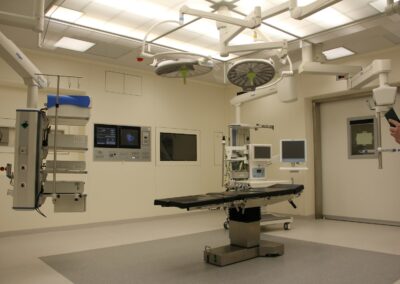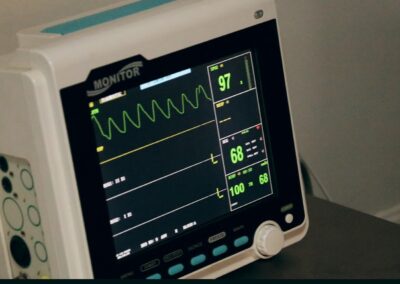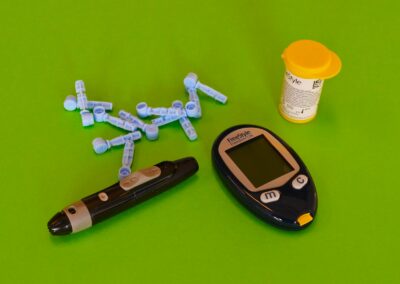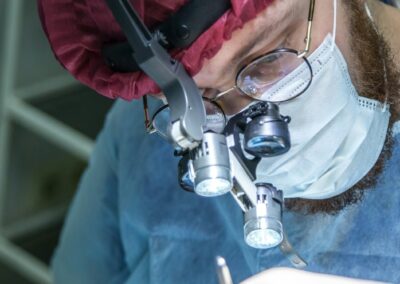The Role of Digital Twins in Modern Surgical Practices
Introduction to Digital Twins in Healthcare
Digital twins in surgical management represent a revolutionary approach to enhancing patient care through advanced technology. A digital twin is a virtual replica of a physical object or system, and in the context of healthcare, it involves creating a detailed digital model of a patient’s anatomy and physiology. This model is continuously updated with real-time data, enabling precise monitoring and intervention.
In Saudi Arabia and the UAE, where the healthcare sector is rapidly evolving, the adoption of digital twins is paving the way for significant improvements in surgical outcomes. Cities such as Riyadh and Dubai are at the forefront of integrating cutting-edge technologies to enhance medical practices. The use of digital twins allows surgeons to simulate procedures, anticipate complications, and tailor interventions to the specific needs of each patient, thereby improving safety and efficacy.
Digital twins leverage artificial intelligence (AI), blockchain, and other advanced technologies to provide a comprehensive, real-time view of the patient’s condition. This holistic approach not only aids in preoperative planning but also ensures continuous monitoring during surgery, enabling prompt response to any complications that may arise.
Real-Time Monitoring and Intervention
Digital twins in surgical management offer unparalleled advantages in real-time monitoring and intervention. Traditional surgical methods often rely on static images and preoperative data, which may not accurately reflect the dynamic nature of human physiology. Digital twins, however, provide a continuously updated model, incorporating data from various sources such as imaging systems, vital signs monitors, and wearable devices.
This real-time data integration allows surgeons to monitor the patient’s condition moment-by-moment, making it possible to detect and address complications as they occur. For instance, if a patient’s blood pressure drops unexpectedly during surgery, the digital twin can help identify the underlying cause and suggest appropriate interventions. This proactive approach minimizes the risk of adverse events and enhances patient safety.
Moreover, digital twins facilitate better decision-making by providing a visual and interactive representation of the patient’s anatomy. Surgeons can simulate different scenarios and predict the outcomes of various interventions, ensuring that the chosen approach is optimal. This capability is particularly valuable in complex surgeries, where the margin for error is minimal.
Implementing Digital Twins in Surgical Practices
The implementation of digital twins in surgical management requires a multidisciplinary approach, involving collaboration between healthcare providers, technology experts, and regulatory bodies. The first step is the creation of a detailed digital model of the patient, which involves collecting comprehensive data from various sources. Advanced imaging technologies, such as MRI and CT scans, are used to create accurate anatomical models, while sensors and wearable devices provide real-time physiological data.
Artificial intelligence plays a crucial role in analyzing this data and maintaining the digital twin. Machine learning algorithms continuously update the model, identifying patterns and predicting potential complications. Blockchain technology ensures the security and integrity of the data, enabling seamless sharing and collaboration among healthcare professionals.
For successful implementation, it is essential to ensure that all stakeholders are adequately trained and equipped to use digital twin technology. Surgeons and other healthcare providers must be familiar with the capabilities and limitations of digital twins, and continuous education is necessary to keep up with advancements in the field. Additionally, regulatory frameworks must be established to ensure that the use of digital twins complies with ethical standards and protects patient privacy.
Strategic Benefits for Healthcare Systems and Patients
Enhancing Surgical Outcomes
The integration of digital twins in surgical management significantly enhances surgical outcomes by providing a detailed and dynamic view of the patient’s condition. By enabling real-time monitoring and intervention, digital twins help prevent complications and ensure that surgeries are performed with the highest level of precision. This technology is particularly beneficial in high-risk procedures, where the ability to respond promptly to changes in the patient’s condition can be life-saving.
In Saudi Arabia and the UAE, where healthcare systems are increasingly adopting advanced technologies, digital twins represent a major step forward in improving patient care. The ability to simulate and plan surgeries using digital twins allows for more accurate and personalized treatment, leading to better outcomes and higher patient satisfaction.
Furthermore, digital twins can help reduce the length of hospital stays and the incidence of postoperative complications, thereby lowering healthcare costs. By providing a comprehensive and real-time view of the patient’s condition, digital twins enable healthcare providers to deliver more efficient and effective care, ultimately improving the overall quality of the healthcare system.
Driving Innovation and Advancements
The adoption of digital twins in surgical management is driving innovation and advancements in the healthcare sector. By leveraging AI and other advanced technologies, digital twins provide new opportunities for research and development. Healthcare providers and researchers can use digital twins to explore novel surgical techniques, test their effectiveness, and identify potential risks before clinical implementation.
Moreover, digital twins contribute to the advancement of personalized medicine by providing insights into individual patient responses to surgical interventions. This knowledge supports the development of tailored treatment plans that are optimized for each patient’s unique physiology. As a result, healthcare systems can offer more precise and effective treatments, enhancing patient outcomes and advancing medical science.
In conclusion, the integration of digital twins into surgical management represents a transformative shift in healthcare. By enabling real-time monitoring and intervention, digital twins enhance surgical outcomes, improve patient safety, and support the ongoing advancement of personalized medicine. As technology continues to evolve, digital twins will play an increasingly important role in shaping the future of healthcare, leading to better patient care and more effective treatment strategies.
—
#DigitalTwins #SurgicalManagement #RealTimeMonitoring #AIinHealthcare #ModernTechnology #GenerativeAI #SaudiArabia #UAE #Riyadh #Dubai #Blockchain #ExecutiveCoaching #ProjectManagement























